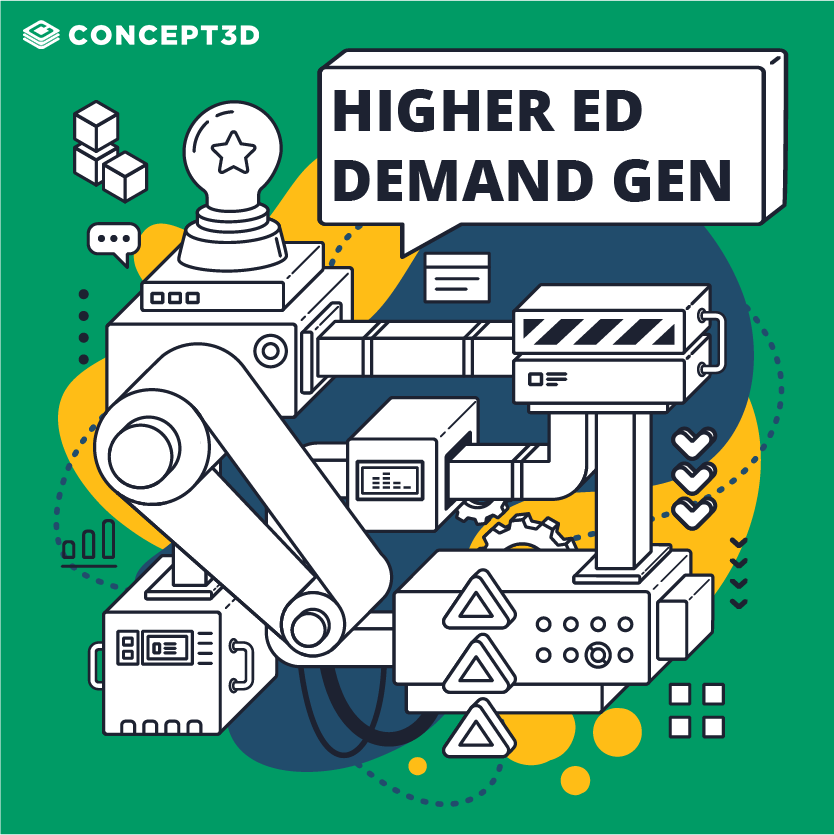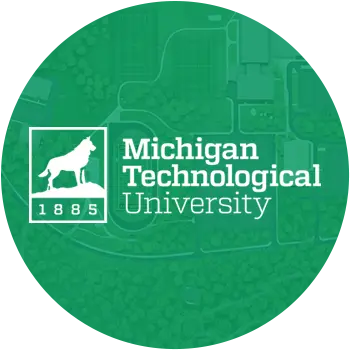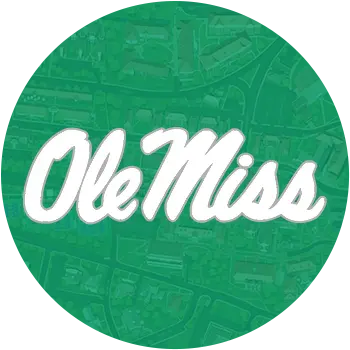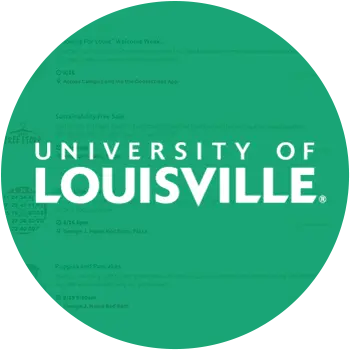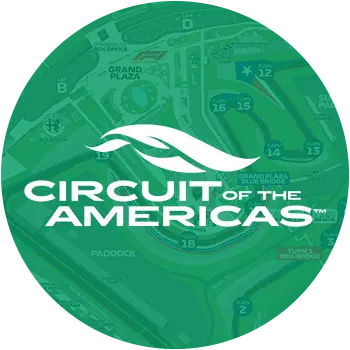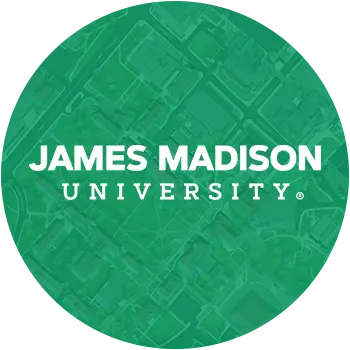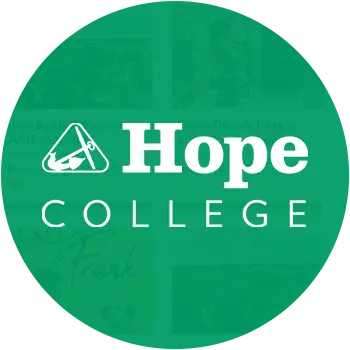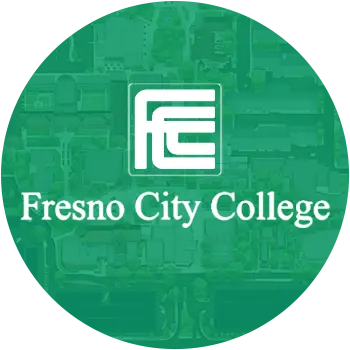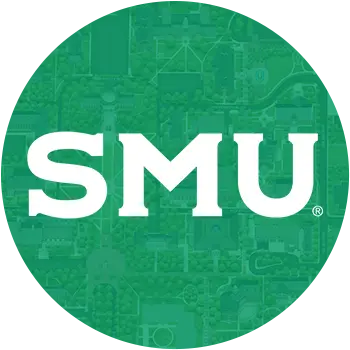Understanding Differentiation in Higher Education
In this episode of Higher Ed Demand Gen, Shiro Hattori is joined by Suzan Brinker, the CEO of VIV Higher Education and host of the Higher Ed Leaders podcast. The theme is differentiation in higher education, humorously likened to the recall of identical waffles from various brands. This analogy highlights how student perceptions often find 98% of colleges indistinguishable.
Historical Stratifiers in Higher Education Are Evolving
Historian Roger Geiger identified traditional stratifiers like location, demographics, selectivity, and religious affiliation. However, shifts in demographics, declining relevance of religion, and economic challenges mean institutions now must innovate to stand out. This has spurred the hiring of marketing professionals and underscores the rising importance of Chief Marketing Officers (CMOs) in higher education.
The Role of Marketing in Higher Education Differentiation
Suzan emphasizes that effective marketing begins with a truly differentiated product, simplifying the subsequent promotional efforts. Collaboration between academic and administrative departments is crucial for differentiation. Notably, storytelling emerges as a powerful tool, with raw and authentic narratives fostering connections with prospective students. Purdue Global’s “This is My Comeback” campaign targeting adult learners serves as an exemplar.
The Need for Market-Aligned Strategies
Market alignment is pivotal. Suzan outlines a four-pronged market research strategy for differentiation: Brand Anthropology, Competitor Analysis, Labor Market Demand Analysis, and Student Demand Analysis. She stresses the importance of adapting to market demands to avoid obsolescence, pointing to discrepancies like high student demand for computer science despite low local labor market demand. She advocates for balancing passion-driven studies with high-value credentials.
Challenges and Opportunities for Institutional Adaptation
One hurdle is the entrenched practices within institutions, often requiring substantial faculty buy-in for effective implementation of new strategies. While smaller institutions might seem more agile, Suzan remains skeptical of their ability to cope amidst declining student numbers. Despite these challenges, strategic planning and understanding market expectations remain crucial for providing value in education.
Conclusion: Strategic Planning is Key
The episode wraps up with a call to action for higher education institutions to embrace strategic planning, collaboration, and market alignment to create differentiated and market-relevant offerings. Suzan Brinker can be contacted on LinkedIn and Blue Sky for further engagement, inviting listeners to continue the conversation on this pressing topic.
Read the transcription
Shiro [00:00:14]:
Hello, everyone. Welcome to the Higher Ed Demand Gen podcast hosted by Concept 3 d. If you like our content, please follow and subscribe to us. As always, I’m Shiro Hattori, your host. And today, I’m thrilled to talk about the difference between waffle brands and higher ed differentiation. So for the topic, I’m excited to have Suzanne Brinker join us. She is the CEO at Viv Higher Education, host of the Higher Ed Leaders podcast, and also a recent author of The Pass Fail, The Urgent Need for Strategic Leadership in Higher Education. Sazan, welcome to the show, and can you please tell us what you love about higher ed?
Suzan Brinker [00:00:55]:
Oh my gosh. What do I love about higher ed? Super nerdy answer, heavy, like headed, intellectual answer I think would be that, I think there’s no institution that transforms lives quite like higher education. Take someone who maybe had a difficult start in life and really gives them wings, right? And allows them to reinvent themselves in a really beautiful way. That’s what happened to me, that’s what I love about higher education. I think it’s a unique institution in American history and in in the history of of our species in the world, and being able to achieve that transformation at such scale. And then just, you know, the more, like, emotional answer is just love being on college campuses. I mean, they’re just a mess. Walking into a dining hall and seeing all the students are going to a a football game or a volleyball game, which I love volleyball, and just seeing that school spirit and and being on a campus on a cozy fall day, nothing beats that either.
Shiro [00:01:55]:
I couldn’t agree more. I love visiting CU Boulder’s campus. It’s it’s my alma mater, and I feel the same way every time I’m there for whether it’s for a football game or for an event. It’s just it’s just so it feels like home to be on campus, so couldn’t agree more. Well, awesome. I know we got to just miss miss each other at AMA, but I know you presented on the topic, and I met some of your colleagues, and it was really great to, to get to know Viv Higher Education a little bit. But can you tell us a little bit more about your role there?
Suzan Brinker [00:02:24]:
Yeah. Sure. So I’m a cofounder and the CEO of BIV. Founded it 5 years ago. I had, been an in house marketing director at Penn State Road Campus and at Northeastern for about 5 or 6 years total. And when I moved to the Boston area, I kind of couldn’t stop with that entrepreneurial itch. I was like, what would happen if I started my own company? I could make an impact on multiple institutions at once. I also thought that I would maybe be have more flexibility and more time for my kids, which ultimately is not at all what happened.
Suzan Brinker [00:02:53]:
But it’s been really fun to just work really hard and see the impact that we can make on multiple different institutions at at a time. So now we’re a team of about 10 with a larger freelance, you know, team that we work with very closely. So really about 30 people that work together very, very closely on an ongoing basis. We have clients all over the US, but really heavily focused still in New England. And, we do enrollment marketing, some brand marketing. Right? We help universities think about how are they gonna grow, how are they gonna survive, how are they going to expand their offerings in this really interesting time that we’re in in the world and in higher education.
Shiro [00:03:33]:
Yeah. Absolutely. And, yeah, I’m really glad we got to to sync up for a little bit here. And I know that the title here today was what’s the difference between waffle brands and higher ed differentiation. What what is the difference, Susanne?
Suzan Brinker [00:03:46]:
There isn’t one. No. Well, we we used this as a hook, in in our presentation at higher AMA higher ed because we’re talking about differentiation and just recently was this massive waffle recall, and it turns out all these different brands of waffles had to be recalled because they were ultimately the same exact waffles, they just had different brands and there was something wrong with them and so ultimately all the waffles disappeared and we were like what’s so different about higher education? If you look, you know, beyond the brand, we are all kind of saying the same things and offering the same things, as as our competitors and as, colleges and universities at large. I think it’s a little bit overstated because each school still is a little bit more unique than literally the same waffle recipe, but, we were trying to be be a little bit fun there Yes. The presentation.
Shiro [00:04:36]:
No. I mean, I think there’s some truth in the numbers that you shared during your your presentation, which I got to look at take a look at. I think you pulled some statistics that 98% of colleges and and universities look alike to students, so that’s, like, the perceived side. Right? And it they 62% of higher ed leaders say that increased competition is making it harder to stand out and attract students, not to mention the cost of acquisition for a student has gone up significantly in the last 20 years. So, I mean, this all kinda just adds to more fuel to the fire about differentiation. Is that right?
Suzan Brinker [00:05:14]:
Yeah. I think so. I think, you know, one of the things that I talk about in the presentation is that, there used to be sort of these traditional stratifiers of higher ed, which I I refer to the book by Roger Geiger, which is called The History of American Higher Education, From the Founding to World War II, and then from World War II to the present, there are 2 volumes. Roger Geiger is the preeminent historian in higher ed, wrote these really great books. He was also my professor in my PhD program at higher ed at Penn State. And, if you read the book right from the start, from the founding of Howard College all the way through to the Industrial Revolution to the 2nd World War, you start understanding that, the size of the higher education market in the United States at large, but also the size of each individual institution is driven by 4 things. And those are where is it located, what are the demographics that it draws, you know, thinking about some women colleges or, colleges that were more focused on, you know, adult learners, selectivity then, right, driving that as well, how hard is it to get into the school. And then finally religious affiliation, you know, so you can play a game like what’s a big selective Catholic university in the Northeast, Boston College, what about the Midwest, Notre Dame, what about the West, you, Gonzaga.
Suzan Brinker [00:06:32]:
And so you could kind of pull that through, each of these tiers, different religious affiliations, no religious affiliation. And that really drove the market of higher education. But now in the last 20 years, patterns have changed, people are much more willing to move, to go to college or grad school, religious affiliation has become less relevant, there’s a demographic cliff that we’re all aware of, where we’re going to have 15% fewer graduates, undergraduate students by 2026. And so everything is kind of changing and the market is getting disrupted by that and that is leading to more competition. And because we have more competition and fewer students to go around, we have to work so much harder to get new audiences to our campuses and to get new audiences to our campuses. We have to differentiate. We we can’t look like 98% of other colleges and universities or our chances of getting those students to be interested enough and enroll on our campuses is going to be significantly lower. So yeah, I think the last 20 years have been an intense time and I don’t have the stat but you can probably see also an increase in, you know, more CMOs being hired, just more marketing people being hired, by colleges and universities to address that problem.
Suzan Brinker [00:07:52]:
And I think that problem is only going to get so much more acute in the next 10 years. 5 to 10 years. As, like I said, demographics continue to change, but also we have a problem where, many people in this country now don’t necessarily believe in the ROI of higher ed the way they used to, and there are other headwinds. So just differentiating, it’s gonna be critical if we wanna survive and among this increased competition and, you know, even competition from outside of of our traditional institutions like EdTech or, you know, a big competitor is also the decision not to go at all and just go into a trade or do something, you know, else that that doesn’t require a college degree anymore. So it’s gonna be an interesting time, and differentiation is gonna be critical.
Shiro [00:08:44]:
Yeah. And I I I like how you’re tying or connecting the dots between marketers and being able to different differentiate because I do think the marketing function is responsible for a lot of that outward communication. Obviously, your program and curriculum development needs to be tied together, but the first touch point or building that awareness of of how you’re differentiating, I think, does ultimately, come down to the marketing folks and the marketing function. So Right. Yeah. I’d I’d love to see more of that function increase and also get more value tied to it, which is good. Because I know I’m I’m hearing the word CMO more on this podcast, which I used to not at all 2 years ago. So I think we’re moving in the the right direction.
Shiro [00:09:29]:
So, it’s good to
Suzan Brinker [00:09:30]:
hear that. I mean, it’s just push and push because at the end of the day, the product really should be differentiated. It’s gonna make it so much easier to market it if they if a a school has, you know, market aligned programs and gives students what they’re looking for, which is not the case in most institutions. We’re not as market aligned as we should be. So the role of a marketer then is not to just promote what the institution is putting in front of us, but also to influence what the institution does in the next 5 to 10 years in terms of product. And I think marketers, this is one of my soapbox things, right? Like marketers are too often seen as order takers and as just, you know, the communications team spends most of their time, sort of on on internal communications, the poster for the faculty member’s birthday party or something like that, instead of actually being asked for their expertise, which is what are students and their families looking for? What does the data tell us about that? And then also being leveraged as influencers in a cross functional way that breaks down those silos between academic affairs and enrollment and advancement and student affairs. That’s really the exciting work that CMOs are increasingly getting to do or or, you know, insisting that they do.
Shiro [00:10:47]:
Should be doing.
Suzan Brinker [00:10:48]:
And the differentiation that we’re looking for, we’re talking about is is then an end result of that of that work, which means really research and data and influence on the internal side.
Shiro [00:11:00]:
Yes. I couldn’t agree more, and I I think maybe your book talks a little bit more about this, but I think that getting marketing to see the the table is a topic I continue to talk about on this podcast, especially with marketing leaders. And I I think the, you know, the the north star of that is not just having influence in the strategic planning, but also, like, being involved with the programming, that institutions and colleges offer. So Totally. I love talking about this.
Suzan Brinker [00:11:26]:
Yeah. No. A 100%. Well, great. One of the silos. Yeah.
Shiro [00:11:30]:
Kinda going back a little bit more towards the differentiation that we were focusing on is, so you mentioned that differentiation used to be more about geography, demographics, selectivity, and religion, but the last 20 years, that’s changed. So what are people more attached to these days?
Suzan Brinker [00:11:49]:
Yeah. I think we’re still thinking about higher education along those same lines, but how much each of them matters has changed. And then there’s also fewer students to go around. And so when you think about needing to attract new audiences rather than audiences that have always been your audience, you have to look different to them than your competitors. And in order to look different to them than your competitors, you have to have some some perspective. You have to almost position your institution like a movement. Right? Or like something that’s going to reflect the identity of the person or the aspirational identity that this person has. So you can go about this in many ways.
Suzan Brinker [00:12:37]:
You can spend a $1,000,000 on a brand project. So many institutions are doing that. Right? And and they have those resources to tell those stories in a big way. But I think our presentation was more focused on the smaller teams that are a little bit more resource trapped, that have to differentiate with imperfect tools and imperfect resources. And so what we then really hone in on is that storytelling and telling real stories, right? I’m not talking about testimonials that you plaster all over your website like two lines. Would recommend this school to anyone. I got my job at this institution or this organization and and, you know, I would recommend this to you. Really more of like a raw and vulnerable approach to storytelling, where a story has an arc and and really tells a hero’s journey.
Suzan Brinker [00:13:27]:
One institution that does this super, super well is Purdue Global. They have the overarching, brand, you know, the sub brand for Purdue Global is this is my comeback because they’re really focused on adult learners and professional audiences who have maybe, you know, stopped out and they need to come back to complete their undergraduate degree or they’re coming back as lifelong learners to continue trying to get a leg up in the professional world for a grad degree or certification or something like that. And so this notion of a comeback I think is really powerful and very psychographic. You know, where people are grappling with, you know, have I failed? Can I still make something more of myself? You know, am I am I up for it? Is it is it gonna be too hard? And then telling real stories about real people around, you know, I didn’t think it was possible to do this because I have little kids. I didn’t think it was possible to do this because I didn’t think I could afford it. I had imposter syndrome. You know, I had a all these different hurdles that people encounter. And then the stories that they tell are like longer form stories that have, like I said, that hero’s journey and that arc that are really vulnerable and that allow you to connect with them.
Suzan Brinker [00:14:42]:
And you know, I think that’s differentiating because the people we tell those stories about only exist on your campus, whether they’re your students, your alumni, or even your faculty. There’s a whole kind of arsenal of content that we can create around our faculty as well, and our thought leadership that only we can we can have, right, because this faculty member doesn’t teach anywhere else. And getting prospective students to really kind of get hooked on those stories, and telling those stories well is one way that we can differentiate with less monetary investment than we would have put together if we were to do a big brand project or, you know, we talk a lot now about, storytelling at scale and how is AI going to factor into that and making everything personalized, and yes. And at the same time, we have to we still have to do the really hard work of bringing those stories to life, and that requires more than putting together a spreadsheet and asking your students to put in their testimonial and signing the waiver.
Shiro [00:15:46]:
Oh, that makes a lot of sense. And and and when you’re you’re putting these stories together, like, is each college of, like, let’s say, the business school and the engineering school, are they the ones responsible for coming up with a con like, what’s a great model to help actually get to the content creation part of the the story? Yeah.
Suzan Brinker [00:16:06]:
That’s all. And people are always like, okay. We get it. Like, we need better stories. We need to tell longer stories. Yeah. We need to have an arc, but how do we actually pull this off because it sounds daunting? So that’s always the first question. And I think, coordinating in a cross functional manner, really taking an we call this like a brand journalism approach, right, where instead of just saying, okay, I’m a marketer, I need testimonials, here’s my spreadsheet, like I was just saying, having a reporter or even a small team of reporters, and this can even be done with the help of student workers, which is really exciting, right, because they know firsthand what it’s like to be on that campus right now, and they know people who have good stories to tell, but going and really doing more of like a long form interview with students and alumni and faculty that fit into the story framework.
Suzan Brinker [00:16:59]:
So this requires probably an hour to 2 hours with each person. You can bring video into that, you know, if you’re interviewing them anyway, grab video, grab a photo, get them to sign the release form, do it all at once, figure out what’s the how is the story going to fit into your bigger into your bigger framework. And and yeah, it’s going to take some work, right, but it can be really exciting to really get to know this person and what is their unique story and then you can leverage it all over your funnel. That’s another problem where we’re seeing a lot of disjointment in the marketing funnel where we have some storytelling potentially, you know, we have something on a website or we have a little bit on social media but it doesn’t get carried through into the digital ad side, it doesn’t get carried through into the, into the drip campaigns that people get once they inquire or apply. And so thinking of storytelling, if you wanted to be truly differentiating, storytelling throughout the entire marketing funnel. Instead of an ad that says, pursue your passion and has an image of a building, right? Like, tell a story in an ad. Like, use the hook of this is my comeback or something like that, and make it psychographic. Make it elicit an emotion.
Suzan Brinker [00:18:17]:
Tell that story in a little bit of a longer way on the landing page. Continue telling that story in the drip campaign so that it’s not as salesy and stale anymore. I mean, I’ve I’ve done secret shopping for dozens of institutions where I’ve been signing up for all of their nurture streams. And the the typical autoresponder that you get 10 minutes after you fill out, like, an inquiry form, right, is, you know, we’re so glad you’re interested in our school. Here are all the reasons it’s great. And then it’s just like 7 bullet points and it’s a list that doesn’t even talk the bullets don’t even talk to each other, right? It’s just literally a few bullets. And, you know, meet with us and learn more. And it’s like, no, I just signed up.
Suzan Brinker [00:18:57]:
I want to learn more. I don’t want the generic list. I want a story. I want connection. And so few institutions deliver those stories and that connection at that really critical point. So I think putting the work into it once a semester to get 5 to 10 really high quality stories that correlate to priority programs or priority brand pillars that you want to promote and just continue building that arsenal, and then having everything flow out from that can be incredibly impactful.
Shiro [00:19:30]:
Yeah. And I I really liked your actual example of your auto response to the inquiry for or inquiry submission. There’s 0 personalization. Right? So, like, there’s a huge opportunity there, which, you know, ties a little bit together with, connecting with students and seeing themselves in whatever you’re talking about. If you’re submitting inquiry to the business school for a specific program, you can personalize that a little bit more towards the programming or whatever the request is. So definitely good. Speaking of tactical, I know that in your presentation, you go over in a very effective differentiation framework. Could you cover that real quickly with
Suzan Brinker [00:20:11]:
those? Well, there are 3 frameworks. The first one is it has to do with market research. So that’s a 4 pronged approach that we say, you know, speaking of marketers, we need to get food at the table, and needing to influence the product before we’re even asked to market it. So the 4 pronged approach to market research that we use, and again, right, like, you could spend $250,000 on a really expensive study, but here is how you can do it yourself. Right? So you can start by doing some brand anthropology, that’s the first piece, and brand anthropology is really just this idea that you understand what has always been at the core of your brand. So Northeastern, even though they’re now a global brand that has campuses all over the world, they’ve always had experience at the heart of their brand and now they’re the experience university. They used to be a commuter school, right, and now they’re this top ranked school, but they’re still the experience university and they’ve never veered away from that. That’s brand anthropology.
Suzan Brinker [00:21:10]:
Elon is another really great transformation story in higher ed that I love to talk about. They, were a Christian school, they had a mascot called the Fighting Christian, and now they have graduated that Fighting Christian, they’ve become actually a non religiously affiliated school, they’re a multi faith campus now and their mascot is the Phoenix. And the reason that they chose the Phoenix is because there was a fire in 1923 where the campus burned down and sort of they rose from the ashes and rebuilt, just like they are rebuilding and reinventing themselves now that they have shed that formal Christian affiliation. That’s another example of brand anthropology. It’s really inspiring. Right? So really understanding what is it in our past? Where is that kind of core miss that we can carry into the future, making sure that it’s really relevant to what students are looking for? So that’s brand anthropology. Then of course doing competitor analysis, so really understanding which are the institutions that your institution is losing students to or your program is losing students to, right, 5 to 7 institutions. And understand, you know, what are their price points, what is their mode that they’re offering these degrees in.
Suzan Brinker [00:22:20]:
Is it online, is it hybrid, is it in person, is it 16 months, 12 months, 2 years for masters? Right? Like, how long does it take to complete the degree and how can you do it? What are their value propositions? And what are the gaps in your competitive segment that you could potentially fill? Oftentimes that opportunity actually in the graduate space is hybrid programs, so I’m hoping that many more institutions are going to move toward that because it’s such a win win. And then the 3rd pillar of that 4 pronged approach is, labor market demand analysis. So understanding tools, you know, like Lightcast or Bureau of Labor Statistics, even LinkedIn, understanding, like, what are, employers looking for from degrees like this. What are the competencies, the outcomes that we need to make sure are in place here? And then the flip side of that is the student demand analysis. So looking at IPEDS, you know, understanding, maybe doing some qualitative research, qualitative research, primary research that helps you understand what are students looking for. And taking that and putting it into action and saying okay maybe we need to launch a few new degrees, maybe we need to think about how to take the degrees that we currently have, especially in the Liberal Arts and the Humanities, and create some win wins for students where they get that really amazing Liberal Arts education but they have concrete competencies and skills and credentials that are linked to that. And doing that hard work of really understanding your academic portfolio based on those four approaches. That’s going to lead to a differentiated academic portfolio.
Suzan Brinker [00:23:51]:
And then from a marketing perspective, we also have in the presentation sort of a method for messaging and creative and a method for digital advertising that continues to make sure that you differentiate it there at every step of the way.
Shiro [00:24:05]:
No. This is this is fascinating, and I I actually think it’s interesting that first that you even added student demand analysis and labor market demand analysis in here because I think it’s so critical towards higher education that, I know I speak to this a lot with our guests on the podcast, but really speaking more towards what value we provide, what what are the products that we sell in in the form of education, and, those are the the outcomes. Right? And so, I like that you focus on this. And this reminds me of a conversation I had oh, go ahead.
Suzan Brinker [00:24:38]:
Oh, I was just gonna say, yes. I I’ve been in conversations with president cabinets or provosts, people who run higher education institutions who still struggle with the notion that we would study what the labor market and what the student demand is. Right? Because we used to be the deciders of what should matter as institutions. Like, we used to curate what higher education should be, and we would say take it or leave it, people. You know, that was the this idea of, like, exclusivity and prestige were were all that was tied to us deciding what mattered and what didn’t matter. But that’s fantasy land. That is no longer the reality. We need to understand what the market wants, and there are still institutions that can get away with this idea that they should be deciding what matters to a certain extent, the really selective ones and really wealthy institutions, but even they can’t do it to the extent that they have been doing it.
Suzan Brinker [00:25:42]:
So, yeah, not I’m not not thinking that the macro market I’m gonna start again because my student computer did that. Thinking that you can afford not to pay attention to the labor market and to student demand is extremely naive, and the institutions that are not doing it now will really regret it in 5 years and in 10 years. I think many of them will close as a result of of not doing that now.
Shiro [00:26:09]:
Yeah. No. This is fascinating. The the conversation I was bringing up was with, I think, the new director of marketing at CU Boulder’s, engineering school for graduates, and, the how they’re seeing a lot of student demand is still existing for for computer science. Mhmm. But the actual labor market, at least as they’re seeing locally here regionally, is that there actually isn’t a lot of labor market demand for computer science, and there’s actually more demand for other programs. And I don’t know if I was at labor to speak, but there’s 2 or the 2 or 3 other programs that are doing really well in the labor market. So part of her job was to try and market those other programs more knowing that there’s a gap in the student demand and labor market and that it’ll actually be better for the student after upon their graduation.
Suzan Brinker [00:27:03]:
Interesting. Yeah. That’s really fascinating. I hadn’t heard that about computer science. In an ideal world, I guess, like, student demand would track the labor market demand a little bit. Right? It would be like, oh, suddenly there are a lot of jobs and this. So now there’s a lot of student demand, and I haven’t studied closely how how those correlate. But yet I think there is also still really healthy demand around the humanities at the liberal arts, which is one of my sort of passion points because I was an English major and I studied history and I loved just immersing myself in the things that I was passionate about as a student.
Suzan Brinker [00:27:39]:
Which, you know, wasn’t, computer science or STEM or nursing or the things that, you know, now if you want a job, you kind of can look up, okay, what should I study? I never thought that way. I was like, I want to study what I’m passionate about. And I think that there’s absolutely a path for institutions to enable that for students, like I said before, but make sure that there is sort of a parallel path where they are also obtaining credentials that are going to be really high value in the labor market. And I know that that’s a topic that many institutions are talking about, but I don’t think many are actually pulling it off because it does require, kind of doing away with some archaic academic affairs practices, and you know, you need to get faculty buy in, you need to plan it and implement it, which is where most good ideas kind of die in higher ed because it’s just really difficult to get things done. So, yeah, I think the institutions who can figure out how to align with the student and labor market demand, and then also how this is another thing, right, who could really figure out how to implement strategy, which is why my whole book is about leadership. You know, you can have the best strategy, but if you can’t lead the strategy, if you can’t implement it, then it’s not gonna be worth much. The institutions that can figure out how to actually study the market and then implement what they find are gonna be the winners, and they’re gonna be differentiating as a side effect of that work that they’re doing. Mhmm.
Shiro [00:29:02]:
And I and I would also argue with that in in saying that if you are a smaller institution, maybe that’s not a net negative because you may the positive side to that is maybe you can move a little bit faster than the larger institutions in switching your programming. Maybe, but I’m just throwing it out there.
Suzan Brinker [00:29:21]:
Oh, yeah. It depends on the
Shiro [00:29:22]:
I see you’re shaking your head.
Suzan Brinker [00:29:23]:
Well, well, I like small institutions. I went to a, small tiny little art school, and I it was absolutely the right fit for me. I think there there there’s that demand isn’t gonna go away for those small institutions. I don’t know if they can necessarily move faster. That one, I’m
Shiro [00:29:41]:
not I’m
Suzan Brinker [00:29:41]:
not sold.
Shiro [00:29:42]:
I’d hope. I guess
Suzan Brinker [00:29:42]:
But I think they’re gonna have a place in the market. It’s just gonna be there. There are gonna be fewer of them because there are few fewer students, so it’s just gonna be harder for them to survive on less day. Pay attention to strategy and research.
Shiro [00:29:54]:
Absolutely. Well, this has been a fabulous conversation. I really enjoyed it. I’m I’m wondering where our listeners can connect with you and learn about all the things you’re doing. I know you have couple different, streams. So Oh, sure. If you wanna share anything, go ahead.
Suzan Brinker [00:30:09]:
Yeah. I mean, I’m on LinkedIn. I post there, almost every day. So you can find me at Suzanne Brinker, s as in Sam, u, z as in zebra, a, n as in Nancy, and then Brinker, b r I n k e r, on LinkedIn. And then, I’m also newly on Blue Sky, which is exciting. It feels like we’ve taken a time machine and taken it back to what Twitter was in 2009. So finding my way around Blue Sky, And, of course, we have our website atvibhiredvhid.com. You should be able to find me if you wanna reach out.
Suzan Brinker [00:30:43]:
You’ll you’ll be successful. I have no doubt, and I look forward to hearing from you if you choose to do that.
Shiro [00:30:49]:
Amazing. Well, thanks again for your time, and thanks for our audience for listening in.
Suzan Brinker [00:30:53]:
Thank you so much. This was fun.

